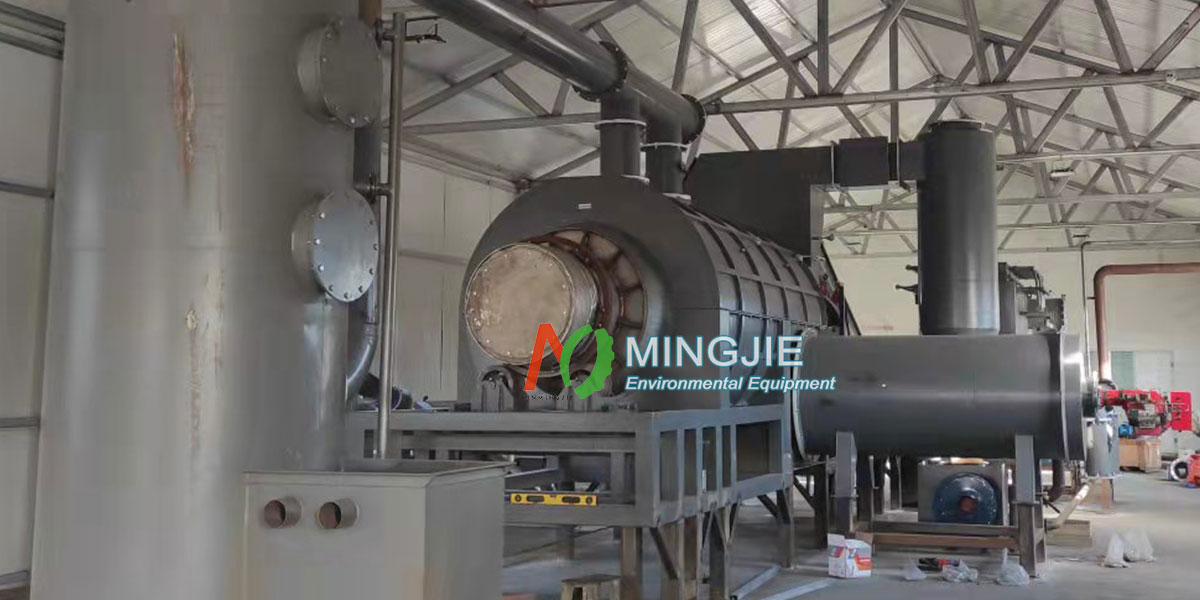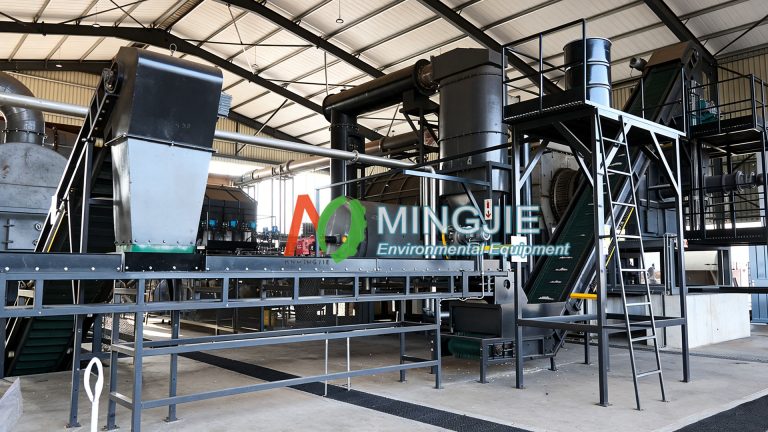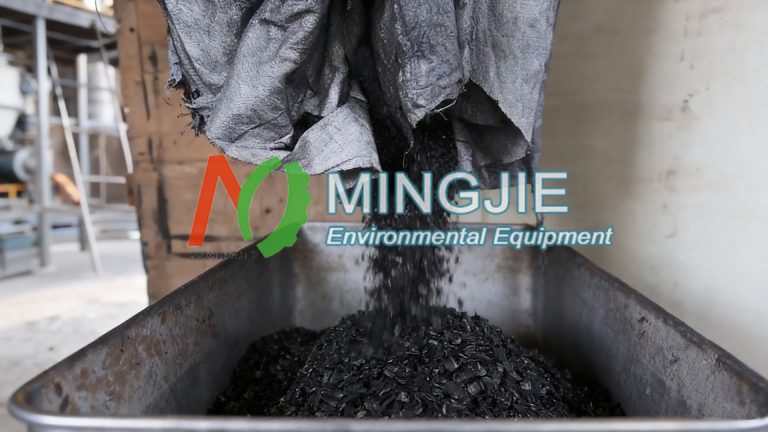Wood pyrolysis plant is effective waste biomass processing equipment, converting waste wood into biochar, bio-oil, and syngas. It is a crucial link between waste biomass and diverse industries, playing a vital role in promoting economic development and environmental protection.
Wood pyrolysis plant utilizes pyrolysis technology to heat wood in an oxygen-free or oxygen-deficient environment, causing complex physical and chemical changes. The wood pyrolysis product charcoal has widespread applications in energy, chemicals, agriculture, environmental protection, and other fields.
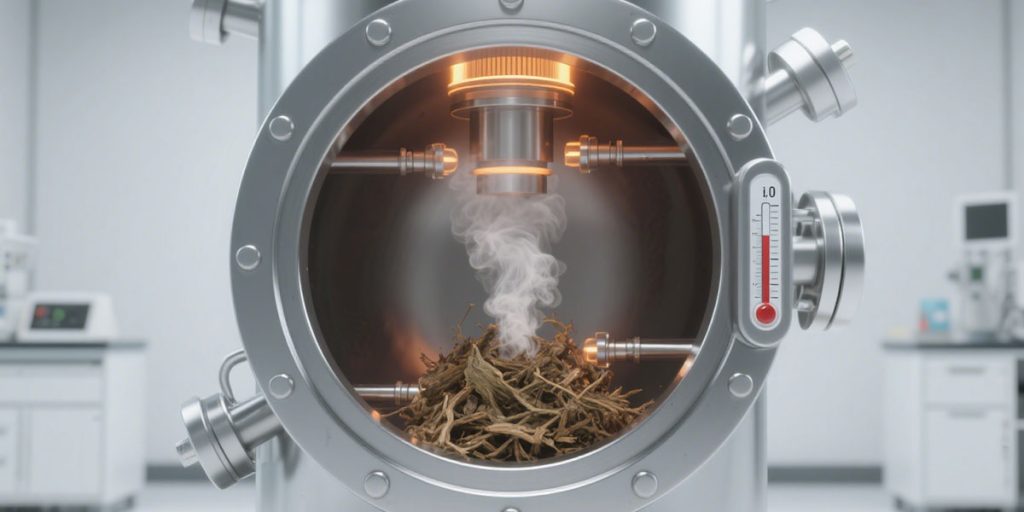
Wood Pyrolysis Process
Wood is a complex organic system composed of macromolecules such as cellulose, hemicellulose, and lignin. During biomass pyrolysis process, as the temperature rises, the chemical bonds within these macromolecules begin to break and reform.

- Hemicellulose is extremely sensitive to temperature fluctuations and begins pyrolysis between 200°C and 260°C. At approximately 220°C, it begins to release heat, with the primary products comprising a mixture of oligosaccharides.
- Cellulose decomposes between 240°C and 350°C, transforming into volatile products such as acetic acid, methanol, and wood tar.
- Lignin decomposes primarily between 250°C and 500°C, with the primary products including phenols, acetic acid, methanol, and charcoal.
As the temperature continues to rise, the wood pyrolysis carbonization reaction becomes more intense. Elements such as hydrogen and oxygen in the wood are released as gases, while a large amount of carbon remains, gradually forming the basic skeleton of charcoal. Simultaneously, syngas (carbon monoxide, hydrogen, and methane) is produced, as well as liquid products such as wood tar and wood vinegar.
Components of Wood Pyrolysis Plant
Wood pyrolysis plant typically consists of the following main components: feeding system, carbonization reactor, heating system, exhaust gas treatment system, discharge system, and control system. They work together to magically transform wood into high-value products.
The feed system is the transportation channel that feeds wood raw materials into the pyrolysis furnace, directly impacting the continuity and stability of production. Wood pyrolysis plant utilize a belt feed system. Belt conveyors can transport wood quickly and in large quantities, making them suitable for large-scale production.
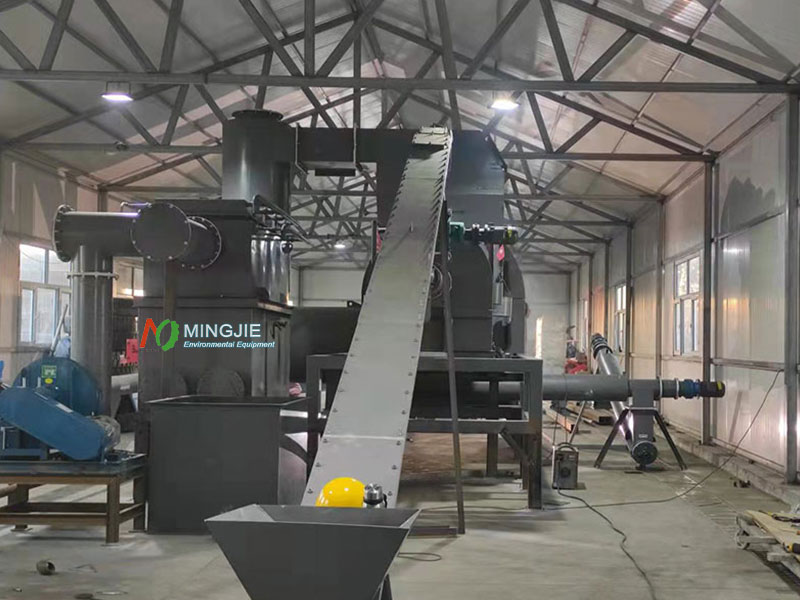
The pyrolysis carbonization reactor is the core of the wood pyrolysis plant. The reactor is typically constructed of a cylindrical steel body with a refractory lining. It is positioned at a slight angle, slowly rotating to skillfully transfer wood fed from above to the bottom. This unique design ensures uniform heating of the wood during the pyrolysis process.
Continuous pyrolysis reactors enable continuous operation while maintaining safety and environmental protection. Their fully enclosed operation significantly improves production efficiency and safety.
The temperature control system constantly monitors and precisely regulates the temperature within the pyrolysis furnace. It typically consists of a temperature sensor, a controller, and a heating device. Temperature is a key factor in determining the type and quality of the products produced during wood pyrolysis, with different pyrolysis stages requiring different temperature conditions.
The discharge system uses a water-cooled spiral to remove the generated biochar. The tail gas treatment system collects by-products such as volatile organic compounds, tar, wood vinegar, and syngas. Through condensation, filtration, and combustion, it achieves resource recovery and environmental compliance.
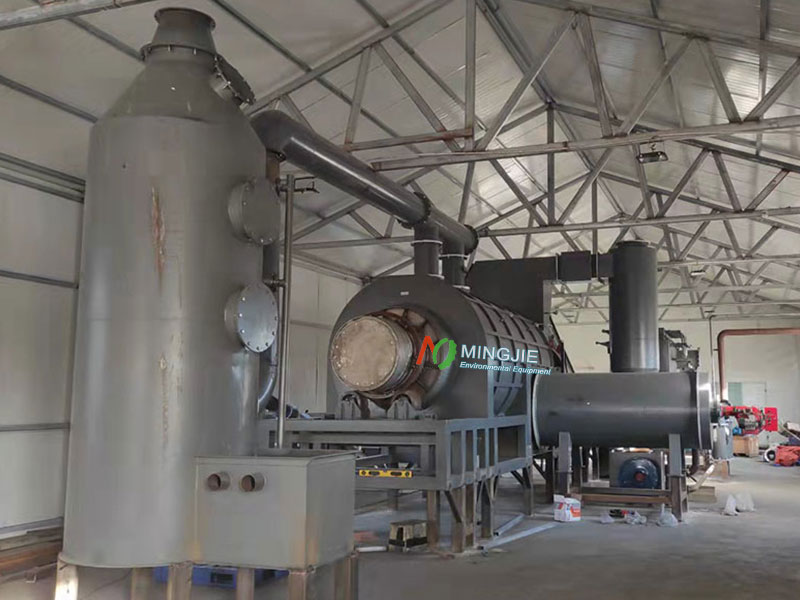
In Summary
Wood pyrolysis plants are driving the continuous development of the biomass processing and biochar production industries. Continuous pyrolysis plants have brought a series of remarkable breakthroughs to improve pyrolysis efficiency, reduce costs, and minimize pollutant emissions.
Wood charcoal making machine utilizes advanced insulation materials and an optimized heating system, significantly reducing energy consumption. By precisely controlling the temperature distribution and airflow velocity within the pyrolysis furnace, it achieves uniform pyrolysis of the wood, improving product consistency and stability.
Continuous biomass carbonization plant is equipped with a highly efficient gas purification system that effectively removes harmful gases generated during the pyrolysis process, such as sulfur dioxide, nitrogen oxides, and volatile organic compounds. Using adsorption and catalytic oxidation technologies, it converts these harmful gases into harmless substances, achieving standard emissions.

